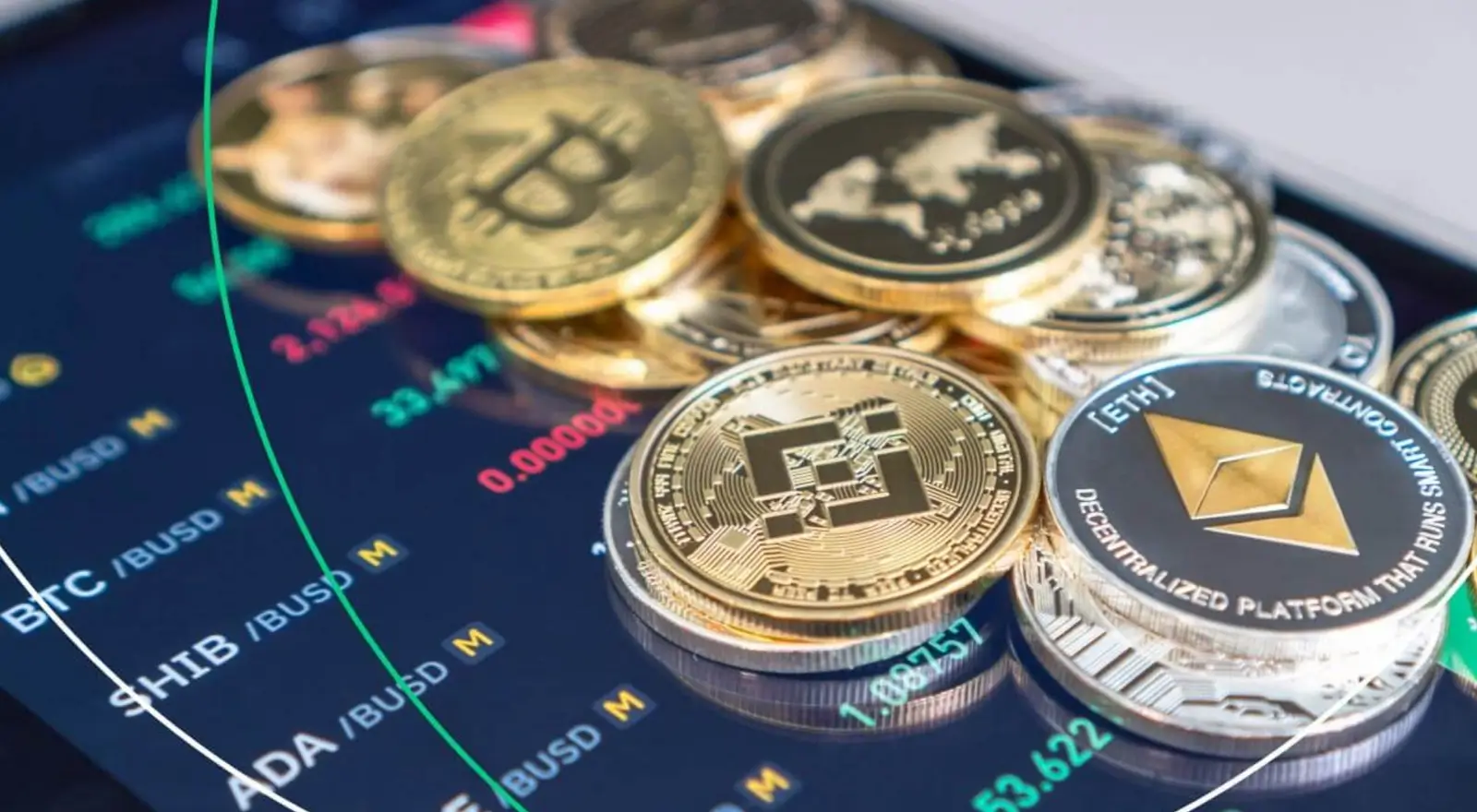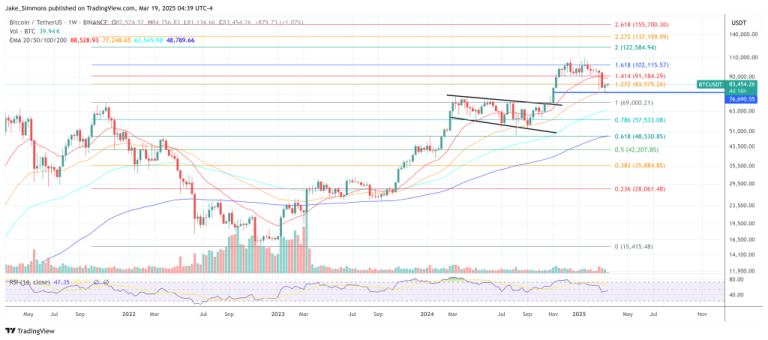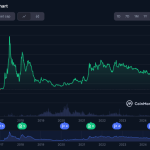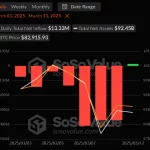Safety principles are often learned through experience. While trading doesn’t involve physical risks, losing significant amounts of Bitcoin due to errors is certainly undesirable.
So, how can you minimize mistakes and remain profitable?
Firstly, trading demands your complete focus and attention at all times. Secondly, it’s not suitable for everyone. The following advice is crucial because it has been “written in experience.”
However, applying these tips in real-time can be challenging, as human behavior is not always rational.
The Tips: Quick Navigation
If you prefer video content, here’s our thorough guide on the topic of Bitcoin and crypto trading tips:
Have a Purpose for Every Trade
Only enter a trade when you understand your reasons and have a clear strategy in mind.
Not all traders are profitable.
Trading is a zero-sum game, meaning there’s always someone on the opposite side of your trade. For each winner, there’s a loser – not everyone can win simultaneously.
The cryptocurrency market already involves numerous professional traders. It’s no longer exclusive to cypherpunks and the select few. The market sees billions in daily traded volume, making it more challenging to maintain a trading edge.
These professionals are waiting for inexperienced traders to make mistakes. Even if you aim to trade daily, sometimes it’s better to stay out of the market instead of diving into volatile waters and risking significant losses. There are days when it’s wiser to retain your profits by not trading at all.
Recognizing when NOT to trade is one of the toughest yet most crucial realizations for a trader.
Clear Stops, Clear Targets: Formulate a Plan
For each position, set a precise target level for taking profits and, more critically, a stop-loss level to limit losses. This involves determining the maximum loss you’re willing to accept before closing the position.
Several factors go into choosing the correct stop-loss level. Many traders fail when they become emotionally attached to their position or the coin itself. Traders often reassure themselves, “It will turn around, and I’ll exit with minimal loss, I’m certain.” They let emotions (or ego) take over.
Compared to traditional stock markets, where a 2-3% change is considered highly volatile, crypto trades are much riskier: it’s not unusual for a coin to drop by 80% in just a few hours. Remember – no one wants to be the last holding the bag.
FOMO Awareness
Meet FOMO – the Fear of Missing Out. It’s tough to see a specific coin being pumped with huge gains while you’re not holding it.
That bold green candle seems to say, “You’re the only one not holding me.” At this point, people will flood Reddit, Twitter, and Telegram trading groups, discussing the ongoing pump.
So, what should you do? Keep moving forward. While it’s true that some may have caught the spike and the market might continue upward, remember that whales and professionals are waiting for small buyers to sell them coins at higher prices.
The price has risen, and the current holders are likely smaller investors. The next step is usually a bright red candle, selling through the order book and making the chart resemble the Eiffel Tower or even the Burj Khalifa.
Risk Management: Not Just for Crypto
Pigs get fat; hogs get slaughtered. This phrase encapsulates the idea of profits. To be a successful trader, aim for small gains that accumulate into larger ones, rather than chasing the extremes.
Wisely manage risk across your portfolio. For instance, never invest more than a small percentage of your portfolio in a non-liquid (very high-risk) market. Allocate greater tolerance to these positions; set stop and target levels far from your buying point.
Bitcoin Is The King: Be Cautious with Volatility
The underlying asset creates volatile market conditions. Remember, the smaller a coin’s market cap and trading volume, the riskier and more volatile it can be. Less money is needed to move the market.
Even BTC is volatile compared to most fiat currencies, a fact to consider, especially when Bitcoin’s price moves sharply.
In previous years, Bitcoin and altcoins often exhibited an inverse correlation: when Bitcoin rose, altcoin prices fell against it, and vice versa. However, since 2018, this correlation has become unclear.
Nevertheless, when BTC is volatile, trading conditions become uncertain. With limited visibility, it’s better to have close targets and stop-losses set – or refrain from trading altogether.
Essential Tips for Altcoin Trading
Many altcoins depreciate over time. They may lose value slowly or quickly, but the constantly changing list of the top 100 altcoins by market cap tells us a lot.
Consider this when holding large amounts of altcoins for the medium or long term, and choose them wisely.
If you’re considering holding altcoins for the long term (months or years) or building a long-term crypto portfolio, remember that altcoins with higher daily trading volumes and strong community backing have better chances of survival.
Monitor the coin’s chart and identify low and stable periods, which are often accumulation phases. When the right time, combined with positive project announcements, arises, the uptrend might begin. As mentioned, the ideal time to buy is not during a pump (i.e., FOMO).
As Warren Buffet said:
“Be fearful when others are greedy and greedy when others are fearful.”
ICOs, IEOs, and IDOs: Token Sales
Public ICOs, later replaced by Initial Exchange Offerings (IEOs) in 2019, and then by Initial DEX Offerings (IDOs) in 2021, are crypto token sales. Many new projects conduct a crowd-sale to offer early investors a chance to buy project tokens at a discounted rate.
The motivation for investors is that the token will be listed on secondary markets, i.e., crypto exchanges, and yield decent profits. In recent years, many token sales have been successful, with ROIs of 10x not uncommon.
However, not all projects reward investors. Some sales have turned out to be scams, with projects disappearing, taking the money with them.
So, how do you know if a token sale is worth investing in? We’ve covered this topic, and a key factor is the project’s fundraising target. A project raising too little might not develop a working product (unless they have other funding), while a project raising a large amount might not have enough remaining investors to purchase tokens on the secondary market.
Risk management is crucial. Never invest too much of your portfolio in one IEO, ICO, or IDO, as these are considered high-risk.
Practical Trading Tips: Begin Today
Here are some practical tips you can implement immediately:
-
-
-
- Fees, fees, fees: Frequent trades increase fees. It’s advisable (and cheaper) to post a new order to the order book as a market maker instead of buying from it (taker). In other words, use limit orders rather than market orders.
-
- No pressure: Don’t trade unless you have optimal conditions for decision-making and always know when and how to exit a trade (have a plan). Pressure harms your trading performance. Never rush! Wait for the next opportunity – it will come.
-
- Stop Loss – Take Profit: Set your targets by placing sell orders. You never know when your favorite coin will pump and clean up the order book supply (and pay a reduced fee as a “maker”).
-
- Place low buy orders: A successful strategy involves placing low buy orders to catch potential dips and “flash crash” events. The following chart from Kraken Exchange shows ETH flash crashing by over 60% in February 2021. Those with low buy orders made significant immediate profits as the price quickly recovered. However, placing low buy orders requires caution; don’t wake up to find your buy order executed and the price even lower.
-
- Buy the rumor, sell the news: This applies to almost any traded asset, whether a company share or cryptocurrency. When a company anticipates a positive announcement, the news may be priced in. This means the price increase occurs before the actual announcement. Once the news is out, investors take profits and sell.
-
- FOMO – don’t rebuy after selling: You’ve made a profitable trade, but as always, once you sell, the coin continues to rise. First, meet Murphy’s Law. Second, never enter a position under pressure or due to FOMO. As long as you have profit, you’re doing well. Move on to your next trade without losing your gains.
-
- Leave your ego aside: The goal of trading is profit. Don’t waste resources (time and money) trying to prove you should’ve entered one position or another. Remember, no trader is always right. The equation is simple – winning trades should outnumber losing trades.
-
- Profit on the way down: Bear markets often present the best opportunities for profit. If you’re unfamiliar, learn how to short Bitcoin and other cryptocurrencies.
-
-
Disregard Financial News and (Most) Other Traders
Avoid spending valuable time on news. Most published analyses and editorials in the traditional press are biased or sponsored by companies or groups.
Instead, invest time learning long-term trends through educational content, not daily news. You won’t find your next investment opportunity in the news. On the contrary, if it’s in the news, others likely know about it and have a better edge. Buy the rumor, sell the news, remember?
Additionally, avoid complicating your analysis by listening to other traders’ success stories. Competing with others can lead to unhealthy FOMO trades. Your skills improve when you focus on yourself, not buying coins because a friend suggested it.
Establish a Long-Term End Goal
Ultimately, remember that you’re trading for a reason, using funds you could lose entirely. Examples of goals include quitting your job, buying a house, or retiring.
Set your short and long-term goals and trade accordingly, avoiding risks with funds you’ll need soon. Align your overall goal with all trading positions and risk management.
Quickly Spot Crypto Scams
Altcoins are tempting, but remember that the attention cryptocurrency received attracted many scammers.
The idea that “you’re responsible for your funds, not the bank” is revolutionary but can lead inexperienced participants to send funds away, expecting “high ROI” or investing in an ICO or IEO that will “change the world.” Unlike traditional finance, cryptocurrency lacks insurance. Once you send funds, they’re no longer yours.
Learn to identify crypto scams; unfortunately, there are many. Many entrepreneurs want your funds, and not all have the right intentions. Avoid wasting time; focus on reasons not to invest instead of contributing valuable cryptocurrency.
Among various scams, rug pulls are common. Watch our video on the topic and stay cautious.
Understanding Your Long-Term Portfolio
Long term, only a few cryptocurrencies will survive. Observing the top 20 coins by market cap, it’s clear that beyond Bitcoin, most change yearly.
Since many won’t survive, carefully consider which altcoins to include in your long-term portfolio and what percentage each should comprise. Market timing is impossible – another crypto bubble could develop anytime.
Use one of the best crypto portfolio trackers to monitor your portfolio at all times.
Profit Is Temporary Until Converted to Fiat
The fiat value of your crypto portfolio is crucial. As long as fiat is the currency of the everyday world (dollars, euros, etc.), measure your total portfolio’s value in fiat terms.
Remember, until fiat reaches your bank account, you haven’t cashed out. Cryptocurrency lacks insurance, and without following security rules, you can quickly lose funds, despite being a successful trader.
Many investors saw their fiat holdings disappear after selling crypto and keeping funds on exchanges. The most famous example was the Mt. Gox collapse in 2014. A more recent major scandal was the 2022 fallout of FTX.
Form a Group with Trading Friends
The crypto world is fast-paced, with lots of information. To stay updated, find a reliable group of friends to share trading ideas and fundamental and technical data. Whether on Telegram or WhatsApp, chat groups have members worth listening to – and others to ignore.









